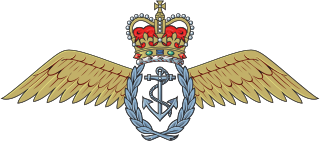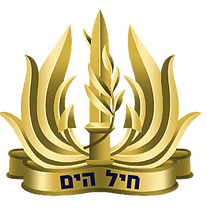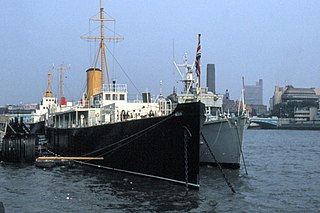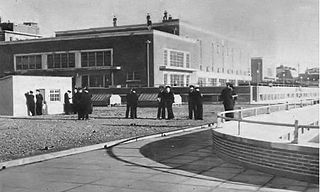This article needs additional citations for verification .(July 2015) |
The Royal Naval Reserve are a part of the Royal Navy of the United Kingdom.
This article needs additional citations for verification .(July 2015) |
The Royal Naval Reserve are a part of the Royal Navy of the United Kingdom.
As the Royal Navy came to its more modern organisation during the 17th century it adopted the practice of impressment to provide the bulk of the crews.
The process of impressment was not suitable for the recruiting of officers, and the procedure adopted there was that officers received a basic pay for their rank when they were holding an appointment and half of that when between appointments (half-pay). Officers in command of ships or establishments received additional 'Command money' which varied with the status of the ship or establishment involved.
Officers and men also received extra payments under the 'Prize' scheme. While this could arise in several different ways the most common by far was the capture of an enemy ship and its subsequent purchase by the Navy (a feasible process with wooden ships). For the ordinary sailor the amount was typically a few shillings (although this represented several months pay) but for the commanding officer it typically amounted to hundreds of pounds. Thus many captains had estates ashore which gave them an alternative income.
Junior officers were in a much more parlous state, as it was not really possible to keep a home on the half pay for a Lieutenant. This was part of the reason why marriage by junior officers was so frowned upon.
Impressment was eventually dropped in the early part of the 19th century in a move to encourage seamen to volunteer for full career employment in the naval service. This was fine for the numbers required during peacetime when many vessels were laid up in reserve but it meant that some means had to be provided to produce the extra men needed when the fleet expanded in time of war. An Act of Parliament of 1835 had established The Register of Seamen to identify men for naval service in the event of war, but in 1854 just 400 volunteered for duty out of 250,000 on the Register. [1] The Register of Seamen was supplemented in 1853 with the creation of the Royal Naval Coast Volunteers (RNCV) comprising boatmen and fishermen who would undertake limited (geographic) service in the Navy during a conflict. [2] This meant the Baltic fleet of Admiral Charles Napier was seriously undermanned for the blockade of Russia's Baltic ports during the Crimean War, and as an MP Napier campaigned for improvements in the treatment of sailors. [1] This led to a Royal Commission on Manning the Navy in 1858 [1] which resulted in a new Act of Parliament in 1859. This authorised the raising of a new pool of volunteer seamen from the Merchant Service and fishing fleet who would undertake annual training in gunnery with the Navy and be called out for service in the fleet by royal proclamation in time of war. By 1862 there were 12,000 volunteers in the new force. [1]
The new force was named the Royal Naval Reserve (RNR) and was originally for ratings but in 1861 this was extended to officers who wore distinctive rank lace consisting of interwoven chain links. Officers and men ranked in seniority with but behind their Royal Navy counterparts. A number of naval hulks were moored in the major seaports around Britain to facilitate gunnery training of seamen when they came in from foreign voyages. Officers spent longer periods of up to one or two years training in shore establishments and in ships of the fleet at home and abroad to acclimatise themselves with naval practice.
At the start of the 20th century with a period of rapid naval expansion taking place it was realised that the RNR could not supply the required number of trained men and a scheme was introduced that allowed men in civilian shore jobs (unconnected with the sea) to train on a part-time basis at special shore establishments, and provided the valuable experience of real time with the fleet for a few weeks a year once a certain level of competence had been achieved.
This was the Royal Naval Volunteer Reserve (RNVR), known as the 'Wavy Navy' on account of the rank stripes (rings) on officers sleeves being wavy rather than straight. The RNVR was organised in 'Divisions' whose names were taken from the place where the main centre was situated. London, Edinburgh and most large seaports had such divisions. Each division was commanded by a Captain.
In 1902, the Admiralty Lords decided to establish a Royal Naval Reserve unit at St. John's, Newfoundland. HMS Calypso, a small older cruiser, was sent across the Atlantic to provide accommodation. 600 men, overwhelmingly local fishermen and seamen, were recruited. Many were seconded for training to the North Atlantic and West Indies Squadron. During the First World War the Newfoundland Royal Naval Reserve served with the regular navy and in 1916 the Calypso was renamed the H.M.S. Briton.
In the late 1930s, The Admiralty realised that the numbers available would not meet the needs of the fast approaching war and created the Royal Naval Volunteer Supplementary Reserve (RNVSR). The main recruits were amateur yachtsmen, who were given sufficient training to get them up to speed in a very high-pressure manner compared with the 'ordinary' RNVR. The RNVSR uniform was the same as the RNVR one. The RNVSR was dropped after World War II.
Those who became officers during World War II were considered to have joined the RNVR and wore that service's uniform. Most of the officers in landing craft, Coastal Forces and the Atlantic Convoys were RNVR and many regular officers were astonished how well they coped. A significant number achieved command of corvettes and even frigates. Quite a few also went into the submarine branch of the service and some achieved command there, the first being Commander E.P. Young DSO, DSC and bar, who commanded HMS Storm.

The Fleet Air Arm (FAA) is one of the five fighting arms of the Royal Navy and is responsible for the delivery of naval air power both from land and at sea. The Fleet Air Arm operates the F-35 Lightning II for maritime strike, the AW159 Wildcat and AW101 Merlin for commando and anti-submarine warfare and the BAE Hawk as an aggressor.
A midshipman is an officer of the lowest rank, in the Royal Navy, United States Navy, and many Commonwealth navies. Commonwealth countries which use the rank include Canada, Australia, Bangladesh, Namibia, New Zealand, South Africa, India, Pakistan, Singapore, Sri Lanka, and Kenya.

The Royal Naval Reserve (RNR) is one of the two volunteer reserve forces of the Royal Navy in the United Kingdom. Together with the Royal Marines Reserve, they form the Maritime Reserve. The present RNR was formed by merging the original Royal Naval Reserve, created in 1859, and the Royal Naval Volunteer Reserve (RNVR), created in 1903. The Royal Naval Reserve has seen action in World War I, World War II, the Iraq War, and War in Afghanistan.

Impressment, colloquially "the press" or the "press gang", is the taking of men into a military or naval force by compulsion, with or without notice. European navies of several nations used forced recruitment by various means. The large size of the British Royal Navy in the Age of Sail meant impressment was most commonly associated with Great Britain and Ireland. It was used by the Royal Navy in wartime, beginning in 1664 and during the 18th and early 19th centuries as a means of crewing warships, although legal sanction for the practice can be traced back to the time of Edward I of England. The Royal Navy impressed many merchant sailors, as well as some sailors from other, mostly European, nations. People liable to impressment were "eligible men of seafaring habits between the ages of 18 and 55 years". Non-seamen were sometimes impressed as well, though rarely. In addition to the Royal Navy's use of impressment, the British army also experimented with impressment from 1778 to 1780.

The Israeli Navy is the naval warfare service arm of the Israel Defense Forces, operating primarily in the Mediterranean Sea theater as well as the Gulf of Eilat and the Red Sea theater. The current commander in chief of the Israeli Navy is Aluf David Salama. The Israeli Navy is believed to be responsible for maintaining Israel's offshore nuclear second strike capability.

HMS Caroline is a decommissioned C-class light cruiser of the Royal Navy that saw combat service in the First World War and served as an administrative centre in the Second World War. Caroline was launched and commissioned in 1914. At the time of her decommissioning in 2011 she was the second-oldest ship in Royal Navy service, after HMS Victory. She served as a static headquarters and training ship for the Royal Naval Reserve, based in Alexandra Dock, Belfast, Northern Ireland, for the later stages of her career. She was converted into a museum ship. From October 2016 she underwent inspection and repairs to her hull at Harland and Wolff and opened to the public on 1 July 2017 at Alexandra Dock in the Titanic Quarter in Belfast.

The Royal Naval Auxiliary Service (RNXS) was a uniformed, unarmed, civilian volunteer service, administered and trained by the Royal Navy to operate in the ports and anchorages of the UK in an emergency. Although the abbreviated title would logically have been RNAS this abbreviation had long been taken by the various Royal Naval Air Stations, so RNXS it was. It maintained training units, and vessels at most major ports in the UK. and was formed in 1963 from the amalgamation of the Royal Naval Mine-watching Service (RNMWS) and Admiralty Ferry Crew Association in response to the perceived nuclear threat to British ports. The service was disbanded on 31 March 1994 due to Ministry of Defence (MOD) cuts. Most vessels from its fleet were transferred to the Royal Navy or sold, with the exception of XSV Loyal Volunteer, which was struck by a RO-RO ferry while berthed in Ipswich Harbour and was later scrapped.

The Royal Australian Naval College (RANC), commonly known as HMAS Creswell, is the naval academy of the Royal Australian Navy (RAN). It consists of the RAN School of Survivability and Ship's Safety, Kalkara Flight, the Beecroft Weapons Range and an administrative support department. It is located between Jervis Bay Village and Greenpatch on the shores of Jervis Bay in the Jervis Bay Territory. Since 1915, the RANC has been the initial officer training establishment of the Royal Australian Navy.

The Bermuda Sea Cadet Corps was created as a registered charity under the Bermuda Sea Cadet Association Act, 1968. The first unit had actually been created two years earlier.

HMS Chrysanthemum was an Anchusa-class sloop of the Royal Navy, launched on 10 November 1917. She received a Le Cheminant chronometer from the Royal Observatory on 15 May 1925. After service in the Mediterranean, in 1938 she became a drill ship with Royal Naval Volunteer Reserve (RNVR) and then the Royal Naval Reserve (RNR). She was sold in 1988 to private owners and subsequently scrapped in 1995.

HMS Impregnable was a 98-gun second rate three-decker ship of the line of the Royal Navy, launched on 1 August 1810 at Chatham. She was designed by Sir William Rule, and was the only ship built to her draught. Purportedly as originally built she was a near copy of the famed first rate HMS Victory, Lord Nelson's flagship at the Battle of Trafalgar.
The Royal New Zealand Naval Volunteer Reserve (RNZNVR) is the volunteer reserve force of the Royal New Zealand Navy (RNZN).

HMS Calypso was a corvette of the Royal Navy and the name ship of its namesake class. Built for distant cruising in the heyday of the British Empire, the vessel served as a warship and training vessel until 1922, when it was sold.

The second Royal Navy "ship" to be called HMS King Alfred was the shore establishment sited at Hove in Sussex. In 1939 on the outbreak of the Second World War, the Navy was searching for a site for a training depot for officers of the Royal Navy Volunteer Reserve (RNVR). The Sussex Division of the RNVR was based in Hove and its Motor Launch, ML 1649, was called HMS King Alfred and near to the divisional base was a new leisure centre that was just finishing construction. The Admiralty immediately requisitioned the leisure centre and on 11 September 1939 commissioned it as HMS King Alfred under the command of Captain John Pelly.

HMS Scotia is one of the newest Royal Naval Reserve units, yet its tradition is rooted in the very cradle of Volunteer Reserve activity in Scotland. In August 1903 the Admiralty appointed the first two Commanding Officers of the then RNVR to form divisions in London and on the Clyde. Lieutenant Commander the Duke of Montrose raised the Clyde Division based in Glasgow, and the division rapidly expanded across Scotland, first to Dundee on board the sailing frigate, HMS Unicorn, and then to Edinburgh on board the monitor, renamed HMS Claverhouse. These two East Coast divisions were, many years later, to form the heart of the modern HMS Scotia.

Vice Admiral Sir Hugh Martell, was a Royal Navy officer who served as Admiral Commanding, Reserves. He is best known for his part as commander of Task Force 308 in Operation Mosaic, the series of British nuclear tests in the Monte Bello Islands in Western Australia in 1956.
The Royal Naval Coast Volunteers (RNCV) was a 19th century reserve force of the British Royal Navy. Created in 1853, the force lasted until 1873 when it was disbanded.
Rear Admiral Sadashiv Ganesh Karmarkar, MBE was a flag officer in the Indian Navy. He was the first Indian officer to command a ship of the Royal Indian Navy. During World War II, he commanded the auxiliary patrol vessel HMIS Ratnagiri, for which he was awarded the Member of the Order of the British Empire (MBE). He later became the first Indian to command British officers, when he commanded the sloop HMIS Kistna. He last served as the Flag Officer Bombay, from 1960 to 1964, before retiring.
The Hong Kong Naval Volunteer Force (HKNVR) was a volunteer navy established in 1933. In 1939, it was granted the Royal Naval Volunteer Reserve status and was renamed Hong Kong Royal Naval Volunteer Reserve (HKRNVR). In 1959, it was renamed the Hong Kong Royal Naval Reserve (HKRNR) after bring absorbed directly into the Royal Naval Reserve. It was disbanded in 1967.

The Royal Naval Artillery Volunteers was a British military reserve force between 1873 and 1892. The force absorbed the men of the earlier Royal Naval Coast Volunteers and was intended to provide men to the Royal Navy in time of war. However, unlike the contemporary Royal Naval Reserve, the men of the RNAV did not necessarily have sea-going experience. It proved difficult to find a role for them and an 1891 report by Vice Admiral George Tryon recommended that the RNAV be disbanded. This came into effect in April 1892 with members of the RNAV being urged to join the army's Volunteer Force. The unit is considered a predecessor of the more successful Royal Naval Volunteer Reserve, founded in 1903.